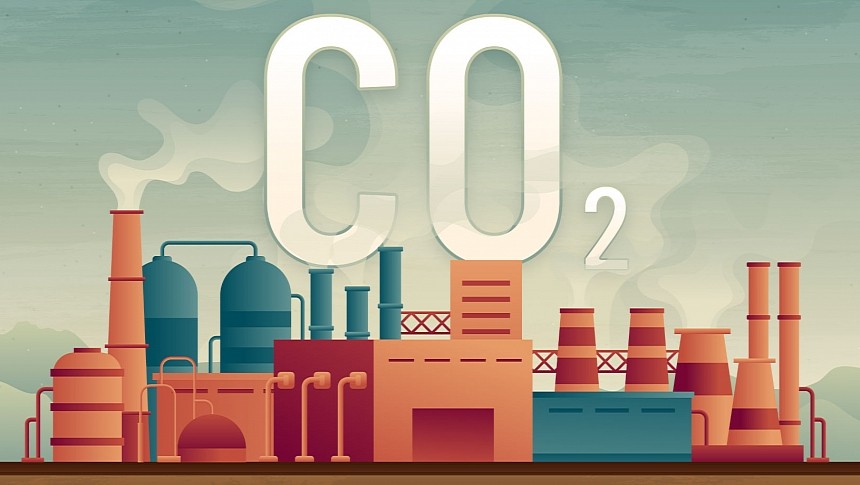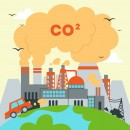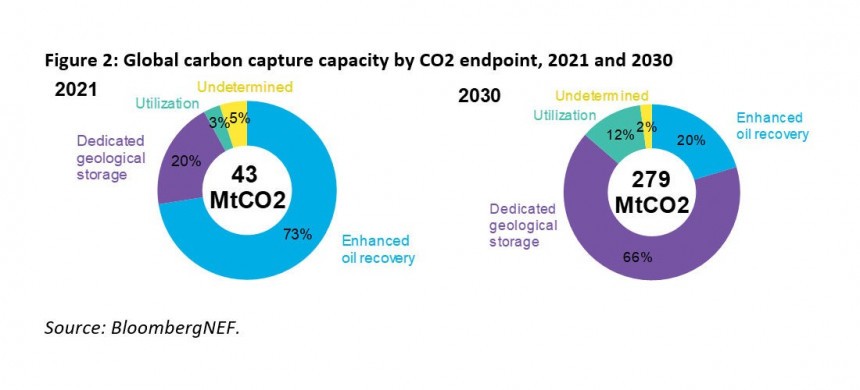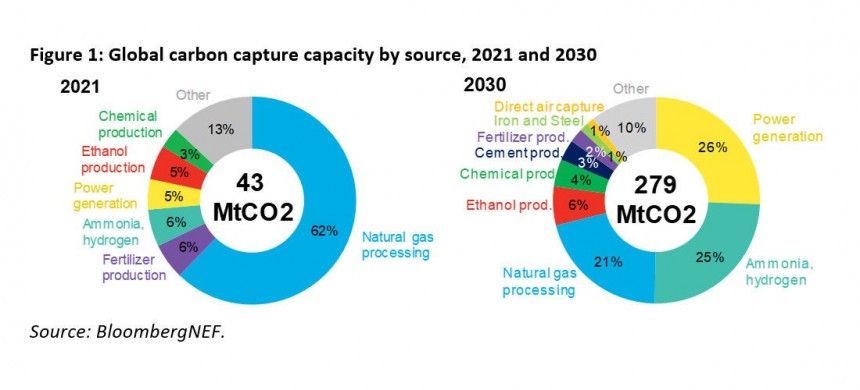It was around when Tesla emerged as a real menace to the established car industry when I heard for the first time about this "carbon capture" new and promising technology. It wasn't just about getting the surplus of CO2 out of the atmosphere but also transforming it into advanced materials that could accelerate the transition of our society into a sci-fi one.
Man, was I surprised to read about this new concept and its promises for the near future? You bet I was. Until the moment I started to ask questions. Shortly after, I was disappointed to discover I was again fooled by the good old "it's too good to be true" saying. I'll try to give you some proofs to spare you the disappointment phase, and maybe you'll realize that "the king is naked."
Based on humanity's knowledge regarding atmosphere dynamics, the scientific consensus is that CO2 levels in the atmosphere are the primary driver of rising temperatures on Earth. Where does it come from? Most of it comes from living creatures that inhale oxygen and exhale CO2. And almost all of it is then absorbed by the plants, by the soil, and by the oceans.
Basically, there is a cycle for the CO2 in nature, and, at the planetary scale, in the last millions of years, at least, there has been some equilibrium that allowed the human species to evolve to the point where we nearly understand all of that. So, this equilibrium is vital for our survival on Earth. I'm not trying to give you a biology lesson, trust me.
To oversimplify, a tree absorbs large quantities of CO2, keeping the carbon in its wood and releasing oxygen back into the atmosphere. When the tree burns, the carbon is released back into the atmosphere, where it combines with oxygen forming the CO2. This CO2 resulting from burning adds to the CO2 naturally existing in the great cycle. Could you keep that in mind?
Of course, trees, plants, people, and animals die and become soil. A considerable part of it is the remains of the living creatures and plants that, after dying, piled up in millions and millions of years. So, the underground is full of carbon from what once was part of the great cycle of life. The fancy word today is fossil fuels.
"Men are from Mars, Women are from Venus" holds a terrifying truth
I won't debate this funny, although sexist popular wisdom saying. I want to point out that bringing Venus into the global warming discussion is appropriate. The planet's atmosphere consists of more than 95% carbon dioxide, which makes up less than 1% of Earth's atmosphere.
Venus's surface temperature is more than 450°C / 850°F, being closer to the Sun than Earth. That's 30 times more than today's Earth's average surface temperature. Venus is the best example of rising CO2 levels on a planetary scale: releasing too much CO2 into the atmosphere will make it so hot that life will go extinct. Period.
How much is "too much CO2"? Well, I don't know. But get this: we've come to the "performance" of extracting roughly 15 billion tons of coal, oil, and natural gas EACH YEAR. And every year, we release more than 40 billion tons of CO2 into the atmosphere because of burning fossil fuels. More appropriately, we ADD this vast quantity of anthropogenic CO2 to the CO2 that's already there.
In the last 150 years since the "Industrial Revolution," scientists estimate that burning fossil fuels released around 1.5 trillion tons (!!!) of CO2 into the atmosphere – and two-thirds of this tremendous quantity was released in the last 30 years. In the same period, the global temperature raised by almost 1.5 degrees. Science proved this is not a mere coincidence. I hope you trust the science instead those omniscient naysayers on social media.
Exxon Mobil, Chevron, BP, ConocoPhillips, and others are pouring billions of dollars into start-ups and other companies developing all kinds of carbon capture technologies. Projects based on these also benefit from Inflation Reduction Act funds because the government's experts see them as essential tools for decarbonization, along with renewables.
The latest news is about the most significant investment in engineered carbon removal yet: the US Department of Energy bets $1.2 billion for America's first large-scale direct carbon capture projects. The two facilities in Texas and Louisiana will presumably remove 2 million tons of CO2 each year from the atmosphere, which equals "annual emissions from roughly 445,000 gasoline-powered cars."
Subsidizing 445,000 electric cars requires three times more money, so one could argue that investing in carbon capture projects makes sense. And this is a damn good narrative for car makers and oil companies. Besides, at some point, DOE's Office of Fossil Energy became "Fossil Energy and Carbon Management," so carbon capture is here to stay.
In fact, BloombergNEF's "2022 CCUS Market Outlook" report highlights that in 2030 the global carbon capture capacity is expected to rise sixfold from last year's level. The research company estimates that, at the end of this decade, the industry will be able to remove almost 300 million tons of CO2, mainly in the petrochemical and cement sectors, but also in the power sector and for the manufacture of low-carbon hydrogen and ammonia.
The majority of today's carbon capture projects are for enhancing oil recovery operations, while in 2030, two-thirds of the projects are expected to be used for storing CO2 underground. Because, you know, the basic concept of carbon capture is decarbonization.
That's up to sixfold more captured CO2 than what the industry will be capable of in 2030, according to the exact BNEF optimistic estimates. But things are even worse because the vast majority of companies in this new industry are hardly using the technology to capture CO2 from the atmosphere – technically known as "direct carbon capture (DAC)."
For investors is more profitable to use carbon capture technology to decrease emissions from industrial sources avoiding high pollution taxes, or to use captured CO2 to create valuable e-fuels for vehicles, vessels, and aviation, and even low-carbon hydrogen for the power sector. In short, carbon capture and storage (CCS) prevails.
And guess what? The transport sector will remain the only major one releasing CO2 emissions into the atmosphere, as in 2030, more than half of the 1.5 billion vehicles in the world will still rely on internal combustion engines based on oil products. Apart from catalyzers and particle filters, there is yet to be a viable carbon capture solution for ICEs for the foreseeable future.
BNEF estimates that direct carbon capture investments will account for only 1% (!) of the industry in 2030 – several million tons of CO2 potentially removed from the atmosphere yearly. Today, the global transportation sector is responsible for roughly 7,000 million tons of CO2 emissions released into the atmosphere, and passenger cars account for around one-third of this enormous quantity.
To offset CO2 emissions from the transportation sector in 2030, we would need to increase DAC investments a thousandfold, which is madness, frankly. So, advertising the carbon capture technology as an argument for keeping the internal combustion engine alive is misleading, at least.
Do we agree that CO2 is to blame for global warming and climate change?
This is a legit question. If you think the climate change debate is just crap, a hoax, or a big conspiracy, please move along. If you have doubts about who's right and wrong on the matter, this editorial may shed some light. If you're sharing my opinions, feel free to add other facts and pieces of information I surely will omit.Based on humanity's knowledge regarding atmosphere dynamics, the scientific consensus is that CO2 levels in the atmosphere are the primary driver of rising temperatures on Earth. Where does it come from? Most of it comes from living creatures that inhale oxygen and exhale CO2. And almost all of it is then absorbed by the plants, by the soil, and by the oceans.
Basically, there is a cycle for the CO2 in nature, and, at the planetary scale, in the last millions of years, at least, there has been some equilibrium that allowed the human species to evolve to the point where we nearly understand all of that. So, this equilibrium is vital for our survival on Earth. I'm not trying to give you a biology lesson, trust me.
To oversimplify, a tree absorbs large quantities of CO2, keeping the carbon in its wood and releasing oxygen back into the atmosphere. When the tree burns, the carbon is released back into the atmosphere, where it combines with oxygen forming the CO2. This CO2 resulting from burning adds to the CO2 naturally existing in the great cycle. Could you keep that in mind?
Of course, trees, plants, people, and animals die and become soil. A considerable part of it is the remains of the living creatures and plants that, after dying, piled up in millions and millions of years. So, the underground is full of carbon from what once was part of the great cycle of life. The fancy word today is fossil fuels.
"Men are from Mars, Women are from Venus" holds a terrifying truth
I won't debate this funny, although sexist popular wisdom saying. I want to point out that bringing Venus into the global warming discussion is appropriate. The planet's atmosphere consists of more than 95% carbon dioxide, which makes up less than 1% of Earth's atmosphere.
Venus's surface temperature is more than 450°C / 850°F, being closer to the Sun than Earth. That's 30 times more than today's Earth's average surface temperature. Venus is the best example of rising CO2 levels on a planetary scale: releasing too much CO2 into the atmosphere will make it so hot that life will go extinct. Period.
How much is "too much CO2"? Well, I don't know. But get this: we've come to the "performance" of extracting roughly 15 billion tons of coal, oil, and natural gas EACH YEAR. And every year, we release more than 40 billion tons of CO2 into the atmosphere because of burning fossil fuels. More appropriately, we ADD this vast quantity of anthropogenic CO2 to the CO2 that's already there.
Carbon capture to the rescue! Or so they claim
I know "they claim" is similar to the expression used by conspiracy theorists when they blame the shadow governments, the ruling elites, the reptilians, and God knows what else. In this case, I point to the fossil fuel industry – nicknamed Big Oil. It's not even a stupid allegation because most investors and proponents of carbon capture technology are the very companies in this industry.Exxon Mobil, Chevron, BP, ConocoPhillips, and others are pouring billions of dollars into start-ups and other companies developing all kinds of carbon capture technologies. Projects based on these also benefit from Inflation Reduction Act funds because the government's experts see them as essential tools for decarbonization, along with renewables.
The latest news is about the most significant investment in engineered carbon removal yet: the US Department of Energy bets $1.2 billion for America's first large-scale direct carbon capture projects. The two facilities in Texas and Louisiana will presumably remove 2 million tons of CO2 each year from the atmosphere, which equals "annual emissions from roughly 445,000 gasoline-powered cars."
Subsidizing 445,000 electric cars requires three times more money, so one could argue that investing in carbon capture projects makes sense. And this is a damn good narrative for car makers and oil companies. Besides, at some point, DOE's Office of Fossil Energy became "Fossil Energy and Carbon Management," so carbon capture is here to stay.
The majority of today's carbon capture projects are for enhancing oil recovery operations, while in 2030, two-thirds of the projects are expected to be used for storing CO2 underground. Because, you know, the basic concept of carbon capture is decarbonization.
He who controls the CO2 controls the planet's temperature
I'm sorry for paraphrasing a quote about information and power. Unfortunately, it doesn't fit the carbon capture industry, although this is what "they" want you to believe. As the BNEF report states, the industry must remove between one and two billion tons of CO2 from the atmosphere to avoid a more-than-2-degrees warming by 2050.That's up to sixfold more captured CO2 than what the industry will be capable of in 2030, according to the exact BNEF optimistic estimates. But things are even worse because the vast majority of companies in this new industry are hardly using the technology to capture CO2 from the atmosphere – technically known as "direct carbon capture (DAC)."
For investors is more profitable to use carbon capture technology to decrease emissions from industrial sources avoiding high pollution taxes, or to use captured CO2 to create valuable e-fuels for vehicles, vessels, and aviation, and even low-carbon hydrogen for the power sector. In short, carbon capture and storage (CCS) prevails.
BNEF estimates that direct carbon capture investments will account for only 1% (!) of the industry in 2030 – several million tons of CO2 potentially removed from the atmosphere yearly. Today, the global transportation sector is responsible for roughly 7,000 million tons of CO2 emissions released into the atmosphere, and passenger cars account for around one-third of this enormous quantity.
To offset CO2 emissions from the transportation sector in 2030, we would need to increase DAC investments a thousandfold, which is madness, frankly. So, advertising the carbon capture technology as an argument for keeping the internal combustion engine alive is misleading, at least.









